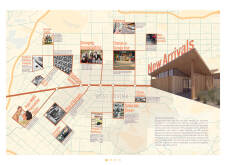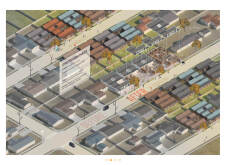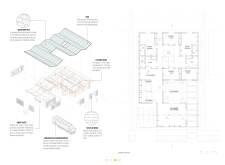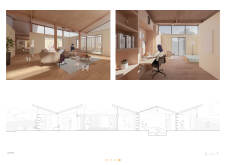5 key facts about this project
Redefining Suburban Living
The project integrates modular construction techniques to create adaptable spaces that can evolve with the changing needs of family dynamics. By utilizing prefabricated wall panels and recycled materials, the design not only reduces construction time but also minimizes environmental impact. Solar roof tiles and smart glass enhance energy efficiency and provide a comfortable living environment. The open-plan layout encourages family interaction while retaining private areas for individual use, addressing the balance between communal living and personal privacy.
Innovative Design Strategies
What distinguishes this project from typical suburban renovations is its focused response to contemporary lifestyles and environmental considerations. The incorporation of outdoor courtyards encourages community engagement and social interaction among residents, counteracting the isolation often found in suburban areas. The flexible room designs allow for variations in use over time, whether for work, leisure, or family gatherings, ensuring the space remains relevant as family needs change. Furthermore, the emphasis on sustainability through research on responsive materials further solidifies the design's contemporary relevance.
Material Selection and Construction Process
The architectural design strategically employs materials like recycled wood and modular wall panels to promote sustainability while ensuring aesthetic and functional quality. The phased construction process minimizes disruption to the existing community and allows for seamless integration of new design elements. The project’s successful execution depends on careful planning and coordination throughout each stage of construction, highlighting a commitment to enhancing the built environment.
For a comprehensive understanding of the architectural design elements, including architectural plans, sections, and ideas, readers are encouraged to explore the project presentation further. This exploration will provide deeper insights into how the project achieves its goals within the context of modern suburban life.


























